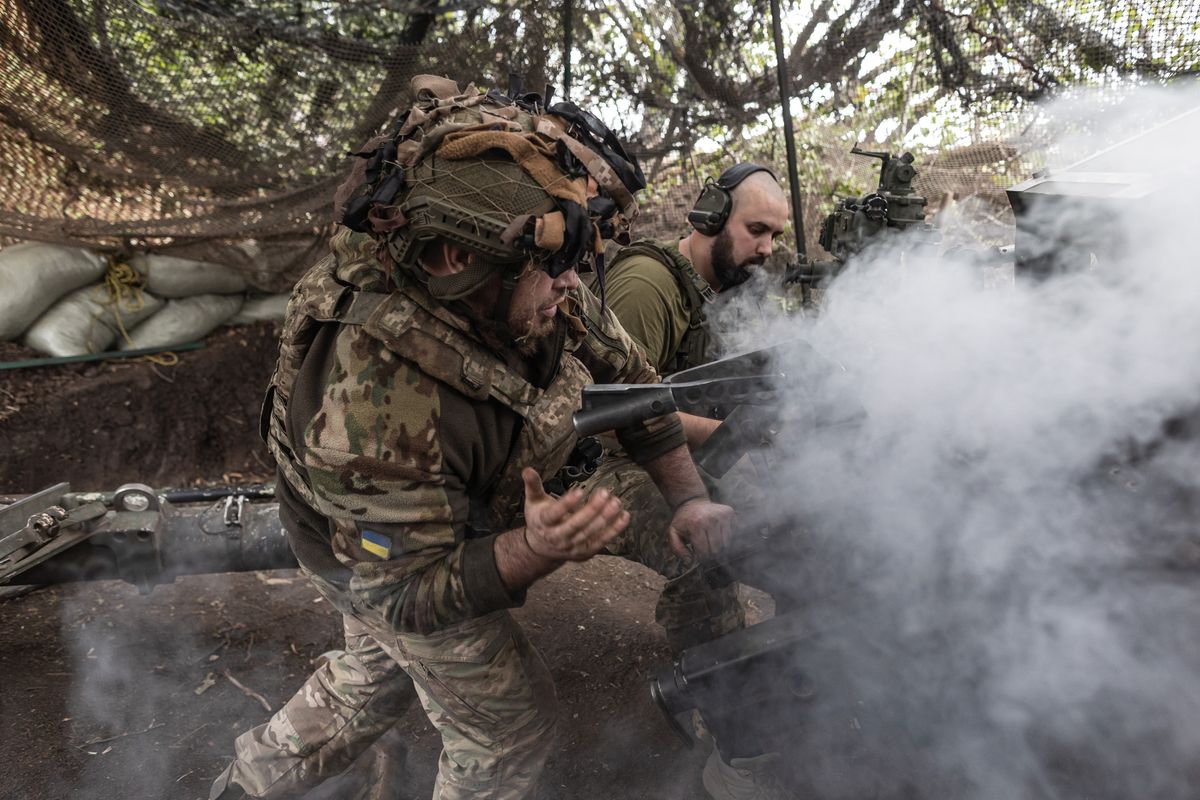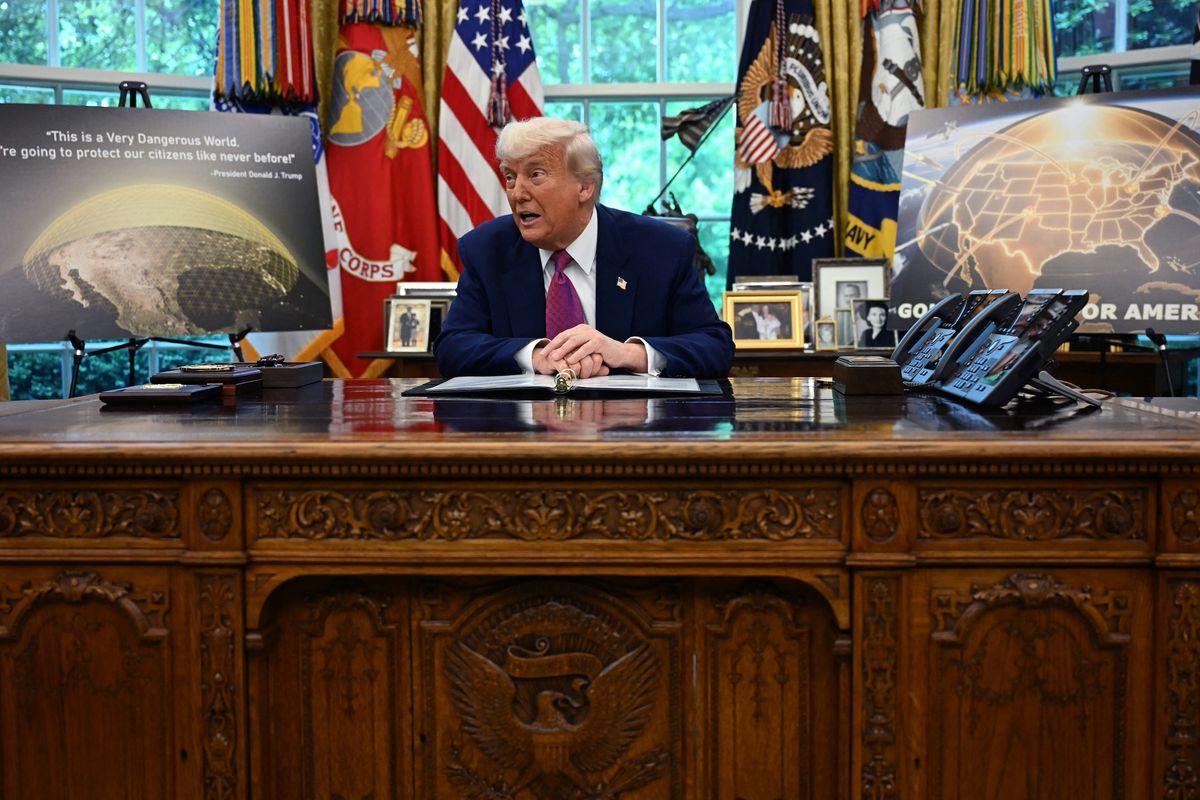With advanced robotics, autonomous machines and nimbler space systems on the agenda for the U.S. military, the Department of Defense has turned its attention to Silicon Valley to find the innovation and technology that will define the future of warfare.
Deputy Secretary of Defense Robert Work this week offered a glimpse into the Pentagon’s thinking on what will define the battlefields of the near and distant future: unmanned wingmen in the air, swarms of drones in and on the sea, wearable electronics loaded with combat apps for soldiers, deep learning machines able to sort mass amounts of data and tiny satellites that scan the globe and dodge missiles.
Maintaining the U.S.’s technological superiority and developing cutting edge weapons and machines demands working with Silicon Valley companies and start-ups, Work and top Pentagon officials have repeatedly said.
“The Secretary wants to tap into the commercial things that are militarily relevant, like artificial intelligence, autonomy, et cetera. He just wants to make sure that we connect operational problems that we have in the Pentagon with the commercial sector — where if they have ideas, we’ll be able to have that free flow of ideas,” Work told an audience at a Washington Post-hosted forum on Wednesday.
“The Secretary calls that permeability. He’s constantly saying, ‘How do we get different ideas in? How do we make people outside the Department understand our problems?’”
Doing business with Silicon Valley
Bridging the gap between the commercial world and Silicon Valley has been a noted aim of Defense Secretary Ash Carter, whose visit there in April 2015 marked the first by a sitting defense secretary in two decades. He’s since made three trips to the area, and the Pentagon last August also set up a Silicon Valley office dubbed DIUx, or the Defense Innovation Unit – Experimental, to help boost its outreach.
On Thursday, for instance, DIUx hosted an Army cyber innovation challenge with the aim of awarding contracts for prototypes within 90 days — a far cry from the bureaucratic, heavy-handed process that typically characterizes awards. In short, the Pentagon is looking to “better move at the speed of the commercial sector,” DIUx’s Ernie Bio said.
Work, meanwhile, recently trekked out to California in February to check out some Silicon Valley companies. One of the businesses he looked at, Planet Labs, is a commercial remote sensing company that delivers geospatial information to customers via a web platform. Founded by former NASA engineers, it’s a full in-house operation — the company has its own satellites, ground network, manufacturing and production and research and development capabilities, according to Planet Labs’ director of governmental affairs Rich Leshner.
“We’ve all seen what the Secretary has done in terms of putting an organization on the West Coast and trying to do outreach,” Leshner said “We’ve all seen them make a proactive effort to understand how to work together better, and they’re still working on it.”
Of special interest to Work were Planet Labs’ “doves,” or small, ten pound satellites sent into orbit to constantly take pictures of the Earth. The San Francisco company then translates that into an information feed about the world they offer to customers.
“They’re going to have about 150 of these small satellites they call ‘doves’ in a sun-synchronous orbit, and it’s basically going to be a line scanner going around the entire planet every single day,” Work said at Wednesday’s forum. “… For an adversary, it’s very expensive to fire an anti-satellite weapon — it’s very hard to bring down something that’s a foot long, let alone 150 of them.”
“By using the combination of commercial technologies plus disaggregating our own constellation [satellite network], we’re confident we’re going to be able to survive any type of concerted attack and provide any support that our warfighters need,” Work added.
Leshner said Planet Labs does not build spy satellites, telling The Cipher Brief, “we don’t have quote-unquote spy satellites, we have a data feed that’s available commercially.”
Emphasizing innovation
Going after Silicon Valley isn’t new, of course, but the stress on “working with Silicon Valley folks to design things with particular military aspects, rather than just grabbing stuff off the shelf” is a “useful step” for the department, Cipher Brief network expert Dr. Thomas Keaney, the Associate Director of Strategic Studies at Johns Hopkins University School of Advanced International Studies, said.
Mike Blades, a senior aerospace and defense industry analyst at Frost & Sullivan, agreed, noting that the DoD is looking to commercial companies because they are “nimbler, have more money to spend on R&D, and can go across different domains.”
“If you look at a lot of the things going on, with unmanned aircrafts and drones, the commercial companies are really driving down the costs while increasing the capabilities,” he said. “And the DoD would like the larger defense firms to do more internal R&D, and some companies do spend a lot on that, but those dollars are tight. So why reinvent the wheel? Just go to the private companies who are willing to do that.”
Companies and researchers outside of the traditional defense base are going to need to confront key questions as the military turns to them for innovation on the future of warfare, said roboticist and roboethicist Ronald Arkin, who argues that the use of autonomous weapons weapons could potentially reduce noncombatant casualties.
“From an ethical perspective, you have to make decisions regarding, are you going to take military funding? Refuse to do any robotics research at all? Take military funding but only open unclassified work? Or are you going to go and do classified research?” Arkin, a professor at the Georgia Institute of Technology, said.
“I also caution my colleagues in the field that if you’re doing good research in the field, someone, someday, somewhere will take it and put it to work in a military system,” he added.
For DIUx, a DoD experiment that essentially serves as “an embassy” in Silicon Valley for the Pentagon, the focus is on engaging the entire Silicon Valley ecosystem — start ups, entrepreneurs, academics and venture capitalists — in developing new and creative ideas. “Ultimately, we want the best solutions for the Department of Defense,” Bio said.
What’s next for weapons tech
The military’s focus on artificial intelligence and autonomy could sound like a future right out of The Terminator, but Work emphasized that the U.S. is not planning to give autonomous machines the ability to make kill decisions.
According to Work, the word autonomy for the DoD is “very simple — it is nothing more than saying we’re going to delegate authority to an unmanned system. … but it will be in a very narrow sense.”
“We will not delegate lethal authority for a machine to make a decision,” Work said. “The only time we’ll do something like give a machine delegated authority is when things go faster than human reactions, like cyber or electronic warfare.”
Adversaries may not think along the same lines — after all, as Work said in a speech in December, the U.S. knows China is investing heavily in robotics and autonomy and Russia is preparing to fight on a roboticized battlefield.
“We might be going against a competitor that is more willing to delegate authority to machines than we are. And as that competition unfolds, we’ll have to make decisions on how we can best compete. It’s not something that we’ve fully figured out,” Work said this week.
And while the US thinks in terms of “assisted human operations,” such as wearable electronics, others may consider “enhanced human operations,” or making biological or genetic changes to individuals. “Some of our adversaries might not be too deterred from saying, ‘Let’s give a machine lethal authority.’ Some of our adversaries might say, ‘Let’s make our soldiers stronger, better, faster,’” Work noted.
In the near term, Work pointed to a number of projects that the US military is prioritizing. Without question, he said, the US will crunch data with deep learning machines to better understand ISIS, its network and how to target it precisely.
Also expect to see unmanned, autonomous wingmen in the air first, before unmanned, driverless convoys on the ground. As Keaney, a retired Air Force colonel, noted, “unmanned aircraft networking together seems like a natural, small first step.”
Work pointed out that the Air Force is working on its “Loyal Wingman” concept, where an unmanned F-16, a fourth generation fighter, will be paired with an F-35, a fifth generation battle network node.
Autonomy in warfare is “inexorable,” Work said. “It is going to happen.”
Mackenzie Weinger is a National Security Reporter at The Cipher Brief.












